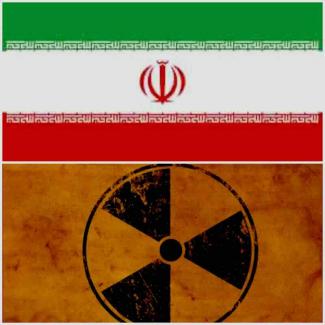Reining the Rogue: Problems of Containing Iran’s Nuclear Dream
The proliferation of nuclear weapons has emerged as an issue demanding greater attention from the international community that engaged in devising methods to fight the scourge of international terrorism. The recent disclosure by Iran that it was about to start processing 37 tonnes of raw uranium into uranium hexafluoride gas has alarmed the US and its allies in the Middle East and Europe for obvious reasons. Dealing with this situation would be difficult for the international community and particularly for the US, considering its ‘occupation’ in Iraq and Afghanistan. Still, any failure to curb the proliferation of nuclear weapons would make the world increasingly unsafe.
The Iranian nuclear programme came under scrutiny by the International Atomic Energy Agency (IAEA) in September 2003 after IAEA inspectors found traces of highly enriched uranium at the nuclear facility in Nantaz. Experts believed that the enriched uranium could be used to manufacture nuclear weapons. Defending itself, Iran had argued that the centrifuge was contaminated by its earlier owner. However, the recent Iranian decision to produce uranium hexafluoride has cleared all doubts regarding the intention and trajectory of the Iranian nuclear programme.
Realizing the gravity of the situation and determined to deprive Iran of any such technology useful for developing nuclear weapons, the United States, Europe and Israel came forward with different proposals. Reacting to the Iranian move, the US Undersecretary of State, John Bolton, said, “Iran’s announcements are further strong evidence of the compelling need to take Iran’s nuclear programme to the Security Council”. This move of the US was aimed at imposing sanctions on Iran by the Security Council if it does not come clean on its nuclear programme. However, many inside the US believe that it is too late to stop Iran from acquiring nuclear weapons, and in such a case, there are only two alternatives left. First, look for ways to make sure that the trigger of these bombs does not fall into the hands of the Mullahs. It is possible that, through regime change in Tehran and the extraction of a promise from the new regime, it would renounce any nuclear ambition. Considering the American debacle in Iraq, regime change through military intervention will be hard to sell within the US and outside without credible evidence of the presence of WMD in Iran. Second, air strikes against the Iranian nuclear facilities of Bushehr and Parchin.
To carry forward such an air strike against the Iranian nuclear facilities, the US has an experienced ally in the form of Israel. In 1981, the Israeli Air Force successfully destroyed the Iraqi nuclear facilities at Osirak. Israel for long has regarded Iran as the most potent threat to it in the Middle East, and this Iranian move has undoubtedly raised eyebrows within Israel. It has threatened a unilateral pre-emptive attack against Iran similar to that of Iraq in 1981. However, doubts have been raised regarding the Israeli ability to carry such an attack since Iranian facilities are at the far edge of the combat range of the Israeli aircraft, widely dispersed and deeply underground. In its efforts to maintain qualitative advantage and overcome some of the above limitations, Israel is procuring the 500 bunker buster bombs from the US, which can penetrate the deepest of Iranian nuclear sites. Fearing a pre-emptive strike, Iran has threatened to position ‘Human Shields’ around its nuclear facilities at Bushehr.
However, Britain, France, and Germany disapproved of such a tough stand, which they felt would close all the doors for negotiations. They want to give Iran one last chance to dispel doubts about its nuclear programme and, for this purpose, have asked Iran to suspend all uranium enrichment activities. The European powers have requested the IAEA Chief to deliver a comprehensive verdict on Iran’s nuclear activities by November 2004. As a result of their efforts, the IAEA meeting on September 18 adopted a resolution setting a November 25 deadline for a full review of Iran’s alleged nuclear weapons programme.
Hasan Rawhani, Iran’s top nuclear negotiator, boasted that Iran had advanced its nuclear know-how despite international attempts to rein it in. However, he was careful enough to say that his country would voluntarily suspend the ‘actual enrichment’. He also added that the centrifuges' production, assembly, and testing would continue. On the issue of sanctions by the Security Council, he said that Iran would follow North Korea and pull out of the Nuclear Non-Proliferation Treaty.
If Iran decides to follow North Korea, which would mean discontinuation of the monitoring of Iranian nuclear facilities by the IAEA officials, the US and the other members of the Security Council would be left with limited options. Military intervention or air strike is an option. Still, considering the US experiences in Iraq and Afghanistan, the requirement is a mixture of hard bargaining and coercive diplomacy to prevent Iran from becoming a nuclear threat because Iran is no South Africa to abandon its long-nurtured nuclear dream voluntarily.
